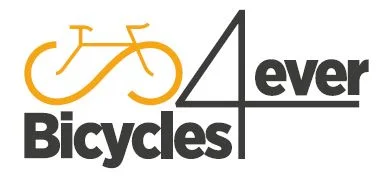Crank Length Comparison: Testing 4 Popular Sizes with Road Cycling Academy
Source: Road Cycling Academy Youtube Channel: Crank Length Comparison: Testing 4 Popular Sizes
Video Crank Length Comparison: Testing 4 Popular Sizes with Road Cycling Academy
Video Crank Length Comparison: Testing 4 Popular Sizes with Road Cycling Academy YouTube Channel.
Crank Length Comparison: Testing 4 Popular Sizes
Road Cycling Academy: Unraveling the Mysteries of Crank Lengths
Welcome to the Road Cycling Academy (RCA), where cycling enthusiasts come together to enhance their understanding of the sport. In this article, we will dive into a popular yet often misunderstood topic in cycling: crank lengths. You might be wondering how changing crank lengths affects performance, specifically in terms of power output and efficiency. Throughout this exploration, we’ll address whether shorter or longer crank lengths can help you as a rider, so let’s get started!
The Basics: Understanding Crank Length
What Are Crank Lengths?
Crank lengths refer to the distance from the center of the pedal spindle to the center of the bottom bracket. Common crank lengths in road cycling range from about 155mm to 180mm. The choice of crank length affects pedal stroke dynamics, which ultimately impacts rider performance.
Why Does Crank Length Matter?
The crank length can significantly influence your cycling efficiency, power output, and riding comfort. It alters your pedaling mechanics and can affect how much force you can generate. A commonly held belief is that shorter cranks result in less power due to reduced torque leverage. However, individual biomechanics and riding style can alter this outcome.
The Power Vs. Efficiency Debate
Am I Going to Lose Power with Shorter Cranks?
When addressing this critical question, it is essential to consider individual variations. Power is not solely a function of crank length but also involves the rider’s physical attributes and neuromuscular capabilities. While some may experience a drop in power with shorter cranks, others might find they can sustain energy more efficiently over long distances.
The Cardiac Efficiency Test
RCA aims to measure how crank lengths impact cardiovascular efficiency. By analyzing heart rate data while maintaining specific wattage, we gather insights into how each crank length affects endurance and overall workout effectiveness.
The Test Protocol: Collecting Valuable Data
Setting Up the Experiment
To ensure reliable results, RCA has carefully designed a testing protocol. This includes:
- Warm-Up: A brisk 10-minute warm-up to get the riders acclimatized.
- Maximal Efforts: Four all-out 10-second sprints with five-minute recovery periods.
- Additional Short Efforts: Two exhaustive 30-second sprints with ten-minute recovery.
- Zone 2 Cardiac Drift Test: A 30-minute ride at a targeted aerobic intensity to assess efficiency.
The responses of two different riders—each with distinct physical profiles—will be recorded and evaluated to ensure a diverse data set.
Factors to Consider
The varying needs of different riders can make or break the cycling experience. For instance, a rider with a lean body mass may adapt better to shorter cranks, while someone with a more muscular build might find longer cranks to be advantageous. The goal is to derive insights that matter to all riding types.
Anticipating Results: What to Expect
Predictions on Power Output
As the experiments unfold, viewers of RCA may have speculations on how the shorter cranks, like the 155mm, will affect sprint power. Will they diminish it? Or could they foster a surprising resilience in longer rides? This uncertainty embodies the intriguing landscape of cycling dynamics.
Efforts Beyond Numbers
While quantitative data will provide significant insights, it is equally crucial to focus on qualitative aspects: rider comfort, fatigue levels, and subjective performance. Gathering feedback from test participants will help determine if shorter cranks contribute favorably to their experience.
Final Thoughts and Future Directions
Embracing Feedback from the Community
As RCA continues this exploration, community engagement is vital. The Academy invites viewers and avid cyclists alike to share their opinions and experiences regarding crank lengths. Could there be overlooked considerations or additional testing you would suggest?
Staying Curious: The Road Ahead
Through innovative cycling education and community contributions, RCA aims to evolve its testing methodologies continuously. Knowledge about crank lengths is just the beginning; there are countless areas left to explore in road cycling.
Join Us on This Cycling Adventure
At the Road Cycling Academy, we are passionate about demystifying cycling through organized research and community engagement. The exploration of crank lengths is a small piece of a much larger puzzle. We encourage all cyclists, regardless of their ability level, to join in the conversation.
What’s Next?
Stay tuned as RCA progresses with our testing protocol! We look forward to sharing our findings with the cycling community in due time. Your input can help refine our methodologies and test parameters—let’s keep learning together!
The Road Cycling Academy is not just an educational platform but a vibrant community where curiosity meets knowledge. If you’re as passionate about cycling as we are, subscribe to the RCA channel and join the journey.
In conclusion, crank lengths are a crucial yet often misunderstood element of cycling. They can affect power output, efficiency, and overall riding experience. With the right testing protocols and community engagement, the Road Cycling Academy aims to shed light on these variations, helping riders make informed choices aligned with their unique cycling profiles. So, whether you’re contemplating a change in crank length or just honing your skills, remember that the journey in cycling is as much about learning as it is about riding.
The opinions expressed in this space are the sole responsibility of the YouTube Channel Road Cycling Academy and do not necessarily represent the views of Bicycles4ever Cycling Culture.

